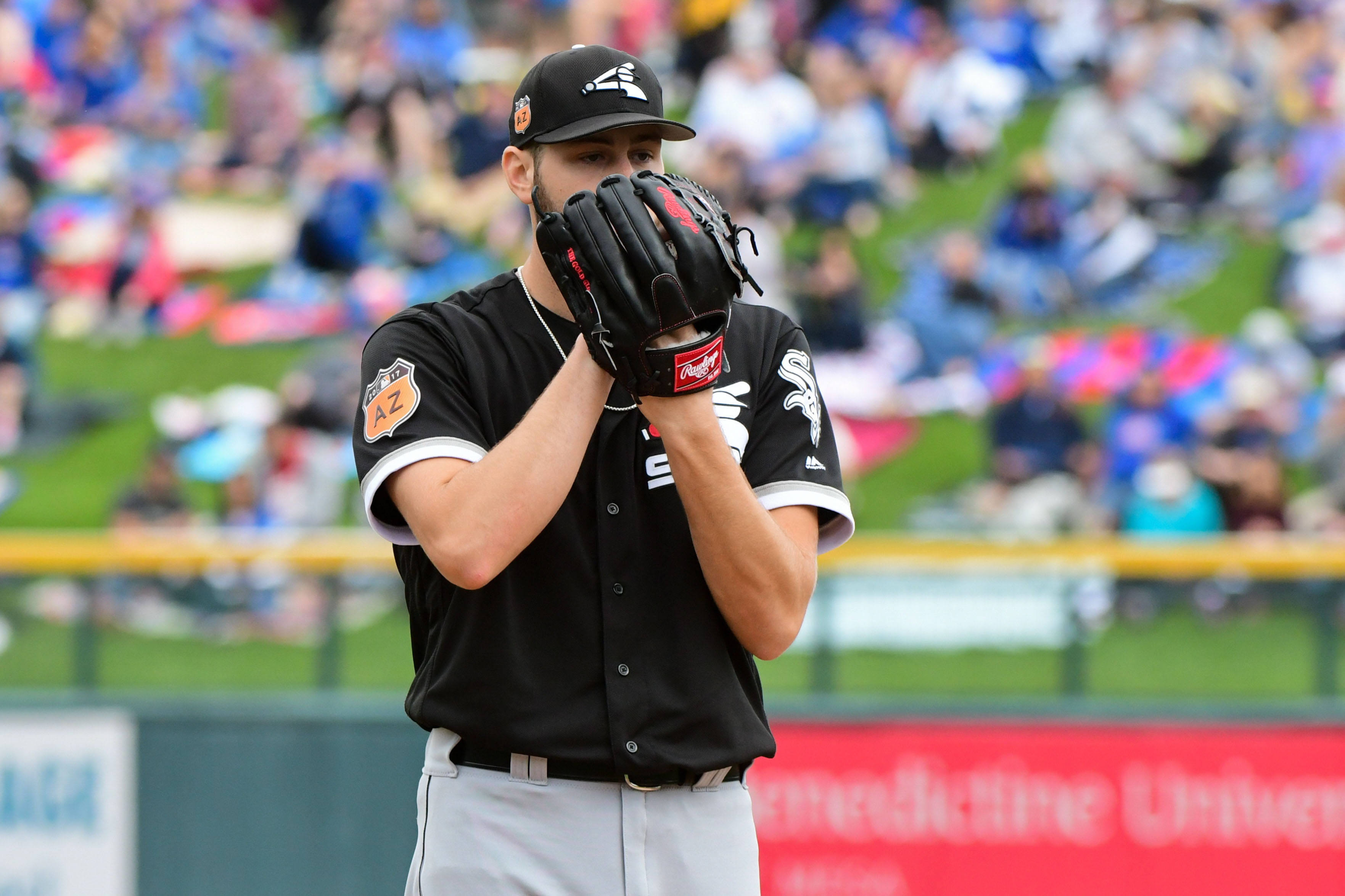The White Sox are in a situation recent memory is unfamiliar with as they enter the 2017 season devoid of hopes for contention. Because of this, it would be foolish to judge the successes or failures of the team based solely on wins and losses, but instead look at individual growth of certain players, trade value increasing or decreasing, or players cementing themselves as having a future with the organization, in order to better gauge how successful this season will be. Starting today, we’ll take a look at every aspect of the organization, from the prospects, to the players on the 25-man roster to begin the season, to the team as a whole, trying our best to answer the question: How do you define success with this team as currently constructed? Today, we’ll look at the prospects.
The question of how to define success with this crop of prospects, on the surface, could be considered simple. If Lucas Giolito, Reynaldo Lopez, and Yoan Moncada are in the majors soon and perform as the hype dictates … Voila! Success!
This is a perfect world scenario and one that at the very least has a non-zero chance of happening. But if you enter the season expecting that trio, as well Carson Fulmer (if we’re talking about players expected to contribute in the majors relatively soon), to progress unhindered, without taking the lumps that every young player takes, you’re bound to be disappointed.
Put another, simpler and more realistic way, success for these prospects will mean that by the time the 2017 season wraps up, they’re closer to being considered cornerstone players for the White Sox than they are today.
OK, so that’s the premise we’re working with. But how, exactly, do each of these players achieve this?
- Success for Giolito would mean answering the questions that have plagued him over the past year. His prospect shine has been, at times, brighter than anyone else currently in the Sox system, but his velocity dipped last season and questions about whether or not he’s going to generate enough misses on swings are legitimate after his major league debut with Washington and this spring’s performance with the White Sox. The fact that the Nationals tinkered with his mechanics to a likely frustrating degree has been chronicled, but if nothing else the past year as well as this spring exposed the fact that Giolito isn’t the near-finished produce he once appeared to be. Regardless of how much time he spends in Charlotte compared to Chicago in 2017, seeing him regain the form that had him considered by many as the top pitching prospect in baseball not all that long ago would be an ideal outcome for his season.
- Lopez and Fulmer will be lumped together here mostly because each enters 2017 with legitimate questions regarding whether or not they can start in the majors, or if their futures are in the bullpen. So the simple answer to what would define success for them is that each proves during 2017 that they can start at the major league level. Lopez showed quite a bit in that regard this spring, and even talked about a cutter he’s been working on with Don Cooper in explaining progress he’s made this spring after his last outing. Fulmer’s spring has been much more rocky, as he showed the type of inconsistency in his delivery that plagued him during his first cup of coffee in the majors last season. If you’re looking at which prospect is likely closest to the majors, the answer is probably Lopez, but regardless of spring results, both he and Fulmer will need to prove they can take what Cooper and the White Sox minor league pitching coaches are teaching and demonstrate it on a regular basis. Seeing those improvements throughout 2017 will go a long way in defining success for both going forward.
- Unlike with the pitching prospects, success for Moncada in 2017 seems much more straight-forward. I said at the beginning of this post that expecting immediate major league success from any of these guys would leave you disappointed, but with Moncada it seems closest to being true, if only because he seems to have fewer holes in his game than the average prospect. But Moncada also skipped Triple-A entirely last season before his 20-plate appearance debut in Boston last season, and given the White Sox insistence that they’re not going to rush any of these guys to Chicago, seeing him demonstrate that he can dominate at a level below where many people feel he should be would be a good place to start in finding success in 2017. All of this isn’t to say that if Moncada struggles if and when he’s promoted it will be considered a disappointment. But showing he’s able to make adjustments, to show the patience he’s displayed throughout his career (he strikes out plenty but also drew a walk in 13 percent of his plate appearances at Double-A last season) will give us a pretty good idea of what kind of player Moncada will be going forward.
- At the risk of being intentionally vague, for the rest of the White Sox top prospects, the ones who are a little further away from the majors — Michael Kopech, Zach Collins, Luis Alexander Basabe, Alec Hansen, etc. — success will be defined simply by further development. Or, more specifically, by not taking any steps backward. For Kopech, development means seeing progress in his secondary offerings, improving fastball command, and working on repeating his delivery. For Collins, it’s as simple as working like hell to prove he can stick at catcher. But in general, for each of these guys success will be continuing to show progress in their development as they advance through the system.
Lead Photo Credit: Matt Kartozian-USA TODAY Sports

2 comments on “Defining success: The prospects”
Comments are closed.